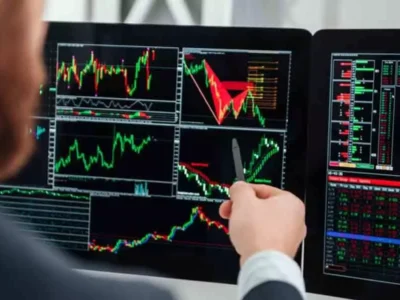The world of stock trading extends far beyond the initial public offerings (IPOs) that often dominate headlines. While IPOs mark the entry of companies into the public market, it is the secondary market that truly fuels the ongoing trading and investment activities. In this blog, we will delve into the concept of the secondary market and explore its crucial role in stock trading. By understanding the secondary market, investors can broaden their horizons, make informed decisions, and unlock new opportunities for long-term investment success.
Definition and Overview of the Secondary Market
The secondary market refers to the platform where previously issued securities, such as stocks, bonds, and mutual funds, are traded among investors. It is the market where investors buy and sell securities from one another, rather than directly from the issuing companies. To participate in the secondary market, investors need a demat account, which serves as a digital repository for holding and trading securities. A demat account streamlines the trading process, eliminating the need for physical share certificates and enabling seamless electronic transactions.
Importance of Understanding the Secondary Market’s Role in Stock Trading
To truly grasp the dynamics of stock trading, it is essential to understand the role of the secondary market. While the primary market involves the issuance of securities, it is the secondary market where these securities are actively traded. By comprehending the workings of the secondary market, investors can make informed decisions about buying and selling securities, evaluate market trends, and effectively manage their investment portfolios. Having a solid understanding of the secondary market is vital for those seeking to maximize their investment potential and achieve long-term success. Opening a demat account online provides investors with a convenient and efficient way to access the secondary market and participate in stock trading.
Understanding the Secondary Market
To navigate the secondary market effectively, it is crucial to understand its fundamental concepts. Unlike the primary market, where securities are initially issued and traded, the secondary market involves the buying and selling of existing securities among investors. It provides liquidity to investors by offering a platform to trade securities at market-determined prices. The secondary market is characterized by its transparency, efficiency, and continuous trading, allowing investors to enter and exit positions at their discretion.
Exploring the Functions of the Secondary Market
The secondary market serves several important functions in the world of stock trading. Firstly, it provides liquidity to investors, enabling them to convert their investments into cash whenever desired. Liquidity ensures that there is a ready market for securities, facilitating smooth transactions. Secondly, the secondary market serves as a platform for price discovery, where the forces of supply and demand determine the market prices of securities. Investors can assess the prevailing market prices and make informed decisions based on these price levels. Lastly, the secondary market allows investors to buy and sell existing securities without any involvement from the issuing companies. This secondary trading provides opportunities for investors to participate in established companies and capitalize on market trends.
Secondary Market Trading Mechanisms
The secondary market operates through various trading mechanisms that facilitate smooth and efficient transactions. Stock exchanges play a vital role in the secondary market, providing a centralized marketplace where buyers and sellers can come together to trade securities. These exchanges act as intermediaries, ensuring fair and transparent trading. Market makers, such as brokers and dealers, play a crucial role in facilitating transactions by providing liquidity and maintaining orderly markets. Investors can place different types of orders, including market orders and limit orders, to buy or sell securities. Market orders are executed at the prevailing market prices, while limit orders allow investors to specify the maximum or minimum price at which they are willing to buy or sell securities.
The Role of Secondary Market in Stock Trading
The secondary market plays a pivotal role in stock trading by expanding investment opportunities beyond IPOs. While IPOs offer a chance to invest in newly listed companies, the secondary market provides a vast array of securities from established companies. Investors can access shares of well-known companies and diversify their portfolios by investing in different sectors and industries. The secondary market offers flexibility, allowing investors to buy and sell securities as market conditions and their investment strategies dictate. Opening a trading account provides investors with direct access to the secondary market, empowering them to execute trades and participate in stock trading.
Secondary Market Risks and Challenges
As with any investment market, the secondary market is not without risks and challenges. Market volatility and price fluctuations can impact the value of securities, potentially leading to capital losses. The risk associated with relying on a single stock or a few stocks is another challenge. If a specific stock performs poorly, the overall portfolio’s value may suffer. It is important to carefully select securities and diversify the portfolio to mitigate these risks. Additionally, investors should be aware of market trends, conduct thorough research, and stay informed about economic indicators and company-specific news to make well-informed trading decisions.
Advantages of Secondary Market Trading
Secondary market trading offers several advantages to investors. Firstly, it provides opportunities for diversification. Investors can spread their investments across different stocks, sectors, and asset classes, reducing their exposure to the risks associated with individual securities. Diversification allows investors to balance their portfolios and potentially improve risk-adjusted returns. Secondly, secondary market trading offers flexibility in buying and selling securities. Investors can enter and exit positions at their preferred times, taking advantage of market opportunities. Moreover, secondary market trading often involves higher liquidity, meaning investors can readily convert their investments into cash without significant price impact or transaction costs.
Strategies for Successful Secondary Market Trading
Implementing effective strategies is crucial for successful secondary market trading. Conducting thorough research and analysis is essential to identify potential investment opportunities and make informed decisions. Investors should consider fundamental analysis, technical analysis, and market trends to assess the value and potential growth of securities. Diversification is another key strategy, spreading investments across different asset classes, sectors, and geographical regions. This approach helps mitigate risks and enhances the potential for returns. Risk management techniques, such as setting stop-loss orders and diversifying investment capital, should also be employed to protect against market volatility.
Secondary Market and Long-Term Investing
While the secondary market offers opportunities for short-term trading, it is also important to consider its role in long-term investing. Investors can capitalize on dividend income and participate in the potential capital appreciation of established companies over time. By adopting a long-term investment approach, investors can benefit from compounding returns and the stability of well-established businesses. Balancing short-term trading with long-term investment strategies can help investors achieve their financial goals and build wealth over time.
In conclusion, understanding the role of the secondary market in stock trading is crucial for investors looking to maximize their investment potential. The secondary market provides liquidity, price discovery, and opportunities to buy and sell existing securities. By opening a demat account and accessing the secondary market, investors can diversify their portfolios, manage risks, and make informed trading decisions. However, it is important to be aware of the risks and challenges associated with the secondary market and to employ effective strategies for successful trading. Utilizing an equity trading app can provide convenient access to the secondary market, empowering investors to explore and harness its potential for diversified and long-term investment success.













Comments